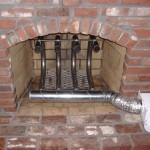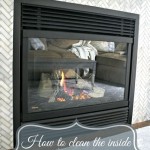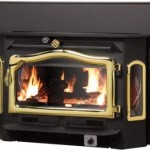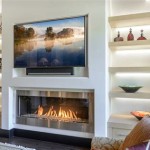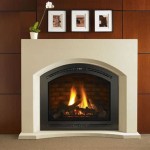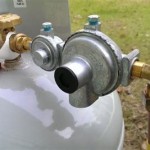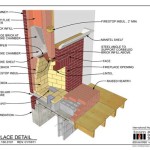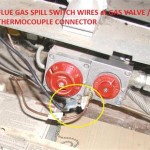How To Cover a Fireplace: A Comprehensive Guide
Fireplaces, once a central feature of many homes, can become obsolete with the advent of central heating and cooling systems. In other cases, existing fireplaces might clash with a new interior design scheme or simply become a source of drafts. Covering a fireplace can be a practical solution for these scenarios, offering aesthetic improvements, enhanced energy efficiency, and increased safety. This article provides a detailed guide on various methods for covering a fireplace, outlining the necessary steps and considerations for each approach.
Before initiating any fireplace covering project, a thorough assessment of the existing structure is crucial. This assessment should include an inspection of the fireplace’s condition, including the firebox, flue, damper, and surrounding masonry. Identifying any existing structural deficiencies or safety hazards is paramount. Such issues should be addressed before proceeding with any covering method to ensure the integrity of the surrounding structure and prevent potential problems in the future.
Furthermore, it's important to consider the long-term implications of covering the fireplace. Is the intention to permanently eliminate its functionality, or is there a possibility of reactivating it in the future? This decision will significantly influence the choice of covering method and the level of permanence involved. A permanent covering might involve more extensive structural modifications, while a temporary solution allows for easier reversibility.
Key Point 1: Temporary Fireplace Covering Methods
Temporary fireplace covering methods offer a flexible and reversible solution, ideal for homeowners who are unsure about the long-term need to conceal the fireplace. These methods generally involve less invasive procedures and can be easily removed or modified as needed. Several options are available, each with its own advantages and disadvantages.
Using a Fireplace Screen: This is perhaps the simplest and most cost-effective method. A decorative fireplace screen can easily conceal the firebox opening, providing a visual barrier and preventing drafts. Screens come in various styles, materials, and sizes, allowing for customization to match the existing décor. Consider a screen with a solid back panel for enhanced draft protection. While primarily aesthetic, a well-chosen screen can significantly improve the overall appearance of the fireplace area.
Employing a Decorative Panel: A decorative panel, made of wood, metal, or fabric, can be placed directly in front of the fireplace opening. This panel can be custom-made to fit the dimensions of the firebox or purchased from a home improvement store. To secure the panel, consider using adhesive strips or small brackets that can be easily removed without damaging the surrounding masonry. Choose a panel that complements the room's decor and effectively blocks the view of the firebox.
Installing a Fabric Drape or Curtain: A fabric drape or curtain can be hung in front of the fireplace opening, providing a soft and elegant covering solution. This method allows for a wide range of design possibilities, as fabrics come in various colors, patterns, and textures. A curtain rod can be installed above the fireplace opening, and the fabric can be easily changed to update the look. Be mindful of fire safety when using fabric, ensuring it is kept a safe distance from any potential heat source, even when the fireplace is not in use. Using fire-retardant fabric is highly recommended.
Placing Decorative Objects: Another temporary solution involves filling the firebox with decorative objects. This can include a collection of potted plants, stacked logs (purely for aesthetic purposes), candles (LED or battery-operated for safety), or a curated selection of decorative items that complement the room's style. This method adds visual interest while effectively concealing the empty firebox. Ensure the items are securely placed and cannot easily fall out.
Using Foam Board and Fabric: A more involved temporary solution involves creating a custom-fit foam board panel covered in fabric. Measure the firebox opening precisely and cut the foam board to size. Wrap the foam board with the chosen fabric, securing it with adhesive spray or staples. This creates a lightweight and easily removable panel that effectively blocks the fireplace opening. This method allows for precise customization of the covering, allowing it to seamlessly blend with the surrounding wall. Ensure the foam board is adequately secured to prevent it from falling out.
Key Point 2: Semi-Permanent Fireplace Covering Methods
Semi-permanent covering methods offer a more robust solution compared to temporary options, providing a greater degree of concealment and draft protection. These methods typically involve some degree of modification to the fireplace structure, but they are still reversible if desired.
Installing a Plywood Cover: A plywood cover involves creating a custom-cut piece of plywood that fits snugly within the fireplace opening. The plywood can be painted or stained to match the surrounding wall or chosen to complement the room's decor. To secure the plywood, consider using construction adhesive or small screws that are easily removable. This method provides a solid and visually appealing covering, effectively blocking the view of the firebox. Ensure the plywood is properly sealed to prevent moisture damage.
Applying a Faux Brick or Stone Veneer: A faux brick or stone veneer can be applied directly to the fireplace opening, creating the illusion of a solid wall. These veneers are typically made of lightweight materials and can be easily installed using adhesive. This method offers a more realistic and visually appealing covering compared to a simple plywood panel. Ensure the veneer is properly aligned and securely adhered to the fireplace opening.
Constructing a False Wall: A more involved semi-permanent solution involves constructing a false wall in front of the fireplace opening. This can be achieved by building a simple stud frame and covering it with drywall. The drywall can then be painted or textured to match the surrounding wall. This method provides a seamless and visually appealing covering, effectively hiding the fireplace from view. Ensure the stud frame is properly secured to the surrounding wall and that the drywall is smoothly finished.
Using a Fireplace Insert: Although typically used for heating enhancement, a non-functional fireplace insert can also serve as a covering. Choose an insert that complements the room’s design. The insert will fill the opening and give a finished look. While this option may be more expensive than other semi-permanent solutions, it provides a highly effective method of concealing the fireplace while preserving the potential for future functionality.
Sealing the Damper: Regardless of the covering method chosen, properly sealing the damper is crucial to prevent drafts. This can be achieved by inserting insulation material, such as fiberglass batting or mineral wool, into the damper opening. Ensure the insulation material is non-combustible and properly secured to prevent it from falling out. This step significantly improves energy efficiency and reduces heating costs.
Key Point 3: Permanent Fireplace Covering Methods
Permanent fireplace covering methods are designed to completely and irreversibly eliminate the fireplace from use. These methods typically involve extensive structural modifications and are suitable for homeowners who have no intention of ever reactivating the fireplace. These methods generally require professional assistance from qualified contractors and masons.
Filling the Firebox with Masonry: This method involves completely filling the firebox with brick or concrete blocks, effectively sealing it off from the rest of the structure. This is a highly effective method of preventing drafts and structurally reinforcing the fireplace. The masonry should be properly mortared and finished to match the surrounding wall. This is a permanent solution that completely eliminates the possibility of using the fireplace in the future.
Removing the Fireplace Completely: This is the most drastic and permanent solution, involving the complete removal of the fireplace structure, including the firebox, flue, and chimney. This is a major undertaking that requires significant demolition and construction work. The surrounding wall must be properly repaired and finished to match the rest of the room. This method completely eliminates the fireplace and frees up space for other uses. It is recommended to consult with a structural engineer before undertaking this procedure to ensure the structural integrity of the building.
Closing the Chimney: Even if the firebox is covered, the chimney remains a potential source of drafts. A permanent solution involves sealing the chimney opening at the roof level. This can be achieved by installing a custom-fit chimney cap or filling the chimney with a non-combustible material, such as concrete or expanding foam. This prevents drafts from entering the home and improves energy efficiency. It is crucial to ensure that the chimney is properly sealed to prevent water damage.
Integrating the Fireplace Area into the Wall: In some cases, the fireplace area can be integrated into the surrounding wall to create a seamless and visually appealing effect. This involves removing the protruding elements of the fireplace, such as the mantel and hearth, and filling in the gaps with drywall or plaster. The wall can then be painted or textured to match the rest of the room. This method provides a clean and modern look, completely concealing the fireplace from view. It requires careful planning and execution to ensure a smooth and even finish.
When undertaking any fireplace covering project, safety should be the foremost consideration. Always wear appropriate safety gear, such as gloves, goggles, and a dust mask. Ensure proper ventilation when working with adhesives, paints, or other chemicals. If unsure about any aspect of the project, consult with a qualified contractor or mason. Following these guidelines ensures a safe and successful fireplace covering project.

Easy Ways To Cover A Fireplace 12 Steps With S Wikihow

Diy Fireplace Cover Tutorial Ehow

How I Created An Insulated Fireplace Cover With Pallet Wood Diy Doors

Your Home Fireplace Cover Brick Makeover Diy

Easy Ways To Cover A Fireplace 12 Steps With S Wikihow

How To Cover A Brick Fireplace With Wood Stone Nina Hendrick Home

Coastal Coverup How To Make A Driftwood Diy Fireplace Cover Table And Hearth

How To Make A Diy Rust Fireplace Cover Salvaged Living

How To Cover A Brick Fireplace With Wood Stone Nina Hendrick Home

Our Hopeful Home Five Ways To Hide An Ugly Fireplace
Related Posts

